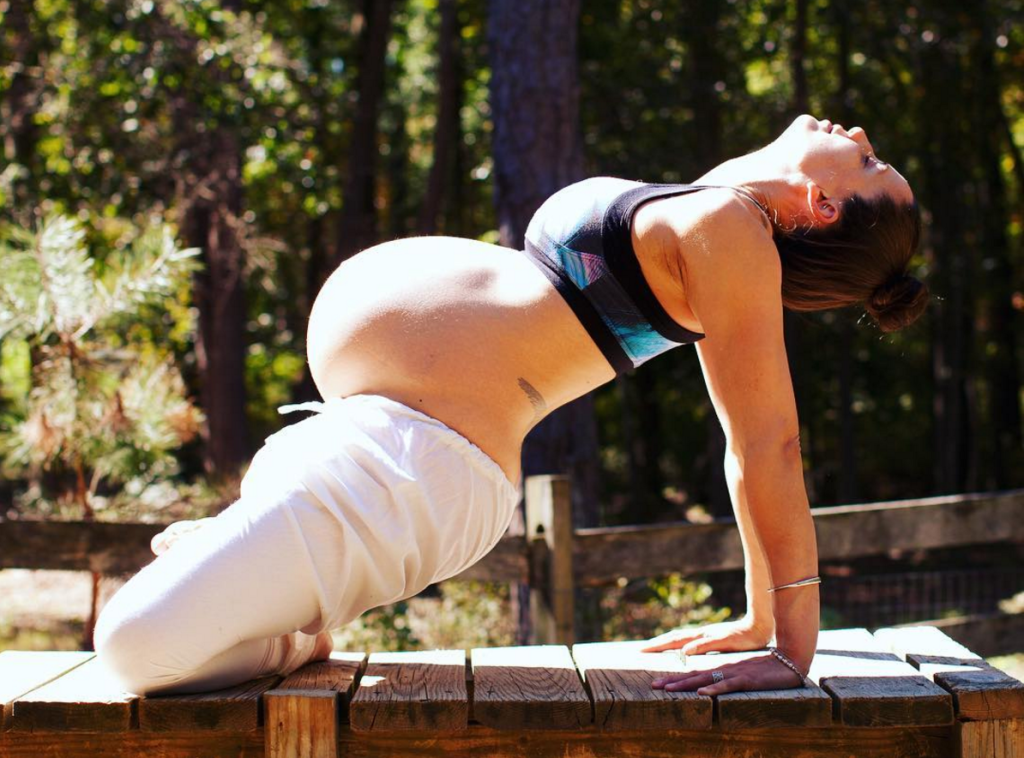Lower Back Pain during Early Pregnancy & Beyond
This guest post was written by Dr. Heather Allen. Dr. Allen received her Master of Physical Therapy from the University of Texas at El Paso in 2001 and graduated with her Doctor of Physical Therapy from A.T. Still University in 2009. She is a licensed physical therapist in Texas. Dr. Allen has a varied clinical background with experience in neurological rehabilitation, cardiovascular rehabilitation, and women’s health. Dr. Allen’s current focus is teaching in academia.
It is estimated that at least 80% of the general population will experience low back pain at some point in their life. It is extremely common for a woman to experience low back pain during her pregnancy. This is due to the changes that occur to a woman’s body during pregnancy. First, our center of gravity is altered due to the weight and location of the baby, especially during the third trimester. Secondly, our body produces more Relaxin (a hormone that allows our joints and ligaments to loosen in preparation for childbirth). Thirdly, our abdominal muscles are stretched due to the growing baby and these muscles are unable to provide normal stability. Finally, our movement patterns are altered with all activities of daily living.
Treatment Options for Lower back Pain
Treatment options are limited during pregnancy since it is best to err on the side of caution. Most pain medications are contraindicated during pregnancy. The general rule of thumb regarding treatment modalities is to avoid any modality other than heat or ice near the baby. A recent study by Keskin et al. (2012) indicated that TENS was more effective than exercise and acetaminophen for pregnancy related low back. Therefore, a TENS unit may be a possible treatment option. This is one that we have used and love!
Whether you are pregnant or not, correct body mechanics are very important. If you are picking up a small light object from the floor, you should use a golfer’s lift technique (how a pro golfer picks up a golf ball from the ground). If you are picking up something heavier such as a toddler, you need to squat down and keep the object close to you. It is important to lift with your legs, not your back. If you are carrying an object, you should keep it close to your body. It is important to sit in a chair that has good lumbar support. After sitting for more than 30 minutes, you should stand up and walk around the room. Our bodies are meant to move, and if we stay in static positions for too long, it will make our low back pain worse.
Sleeping During Pregnancy
Towards the end of pregnancy, it is very difficult to find a comfortable sleeping position. After 20 weeks, a woman should no longer sleep on her back or stomach. This can be a challenge for women who normally sleep in these positions. When you are sleeping on your side, you can put pillows between your knees and a pillow behind your low back. Some people also find it comfortable to hug a pillow(s) in this position.
Exercises for lower back pain in pregnancy
There are a variety of exercises that can be helpful throughout pregnancy. Walking is a great way to exercise throughout your pregnancy. Swimming and water aerobics put minimal stress on your low back. Standing back extensions can be very helpful to maintain our lumbar extension. It is important to perform core exercises such as pelvic tilts in standing or sitting. You can perform alternating arm and leg lifts in quadruped. It can also be helpful to trade in your desk chair and recliner for a birth ball. We love this one!
Our core consists of our low back muscles, abdominal muscles, and pelvic floor muscles. As previously mentioned, our abdominal muscles are severely affected by pregnancy. Many pregnant females experience diastatsis recti (vertical separation of the abdominal muscles). The pelvic floor is an often-forgotten component of the core. One purpose of the pelvic floor is to support the internal organs above it, and thus it is crucial to strengthen this muscle group during pregnancy with Kegel exercises. Likewise, strong pelvic floor muscles can assist during delivery.
A women’s health physical therapist can be an excellent resource for treatment of low back pain during pregnancy. Likewise, physical therapists are trained to provide customized exercise programs, posture analysis, and body mechanic training. A physical therapist can also determine if a maternity support belt would be of benefit to you.
Sources: Keskin, E.A., Onur, O., Kiskin, H.L., Gumus, I.I., Kafali, H., & Turhan, N. 2012. Transcutaneous electrical nerve stimulation improves low back pain during pregnancy. Gynecologic & Obstetric Investigation, 74, 76-83.


No Comments yet!